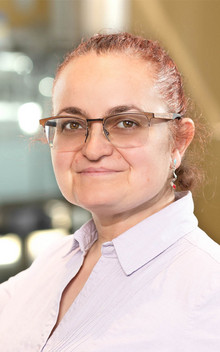L'ensemble de l'équipe est menée par Gerardo Ferbeyre, chercheur régulier du CR-CHUM et professeur au département de biochimie et médecine moléculaire.
Le projet a été présenté ainsi (en anglais) par la fondation :
Preventing chemotherapy resistance by killing senescent cells
In the boxing ring, it’s common to see fighters throw multiple punches in sequence. This is called a combination, and it is often more effective than a single blow. Take the one-two combo, for example. When used successfully, it consists of a jab intended to open the opponent’s defenses, followed by a powerful cross to capitalize on the opponent’s vulnerability.
To treat pancreatic and prostate cancers, a multidisciplinary team of researchers have been awarded $2.4 million in the form of a Terry Fox New Frontiers Program Project Grant to develop a combination therapy based on similar principles.
“Rather than pursuing a single, all-encompassing method to eliminate tumour cells, we propose a two-step strategy which seeks to ‘knock-out’ tumour cells: we call it the ‘one-two punch therapy,’” says Dr. Gerardo Ferbeyre, project leader and principal scientist from the Department of Biochemistry and Molecular Medicine and the University of Montreal Hospital Research Centre (CRCHUM).
“In the initial stage, we induce a dormant state called senescence in the tumour cells, rendering them vulnerable to targeted treatment (the first punch). This transformative step primes the cells for the subsequent application of specialized drugs known as senolytics (the second punch), specifically designed to eliminate senescent cells.”
With this innovative approach, the team aims to counter a defence used by some cancer cells to evade traditional chemotherapies. According to Dr. Ferbeyre, traditional chemotherapies target and destroy rapidly dividing cells, but researchers have found that certain tumour cells called “sleeper cells” can switch on a senescence-like state and temporarily stop dividing, allowing them to dodge chemotherapy, only to re-awaken and continue dividing following treatment.
Until now, this defence has been very difficult to counter.
“Our innovative method capitalizes on the unique vulnerability of senescent cells to administer precise and potent treatments tailored to their specific characteristics,” says Ferbeyre. “This approach will also better target cancer cells while leaving normal cells unscathed. If successful, we could create more effective treatments with fewer side effects.”
Over the next four years, the team will leverage advanced technologies to develop unique combinations of senolytic drugs that can be tailored to patients with pancreatic and prostate cancers. They will then explore new drug delivery systems to administer these combinations and test their combination approach with immunotherapy in the hope of expanding its success to additional patients.
“The prospect of bringing our therapeutic concept to clinical trials and ultimately to the clinic instills a sense of hope, not only among our research team but also within the wider cancer community,” says Dr. Ferbeyre. “Together, we will continue to work tirelessly toward a future where cancer treatments are more effective, personalized and capable of providing hope and healing to patients and their families.”

